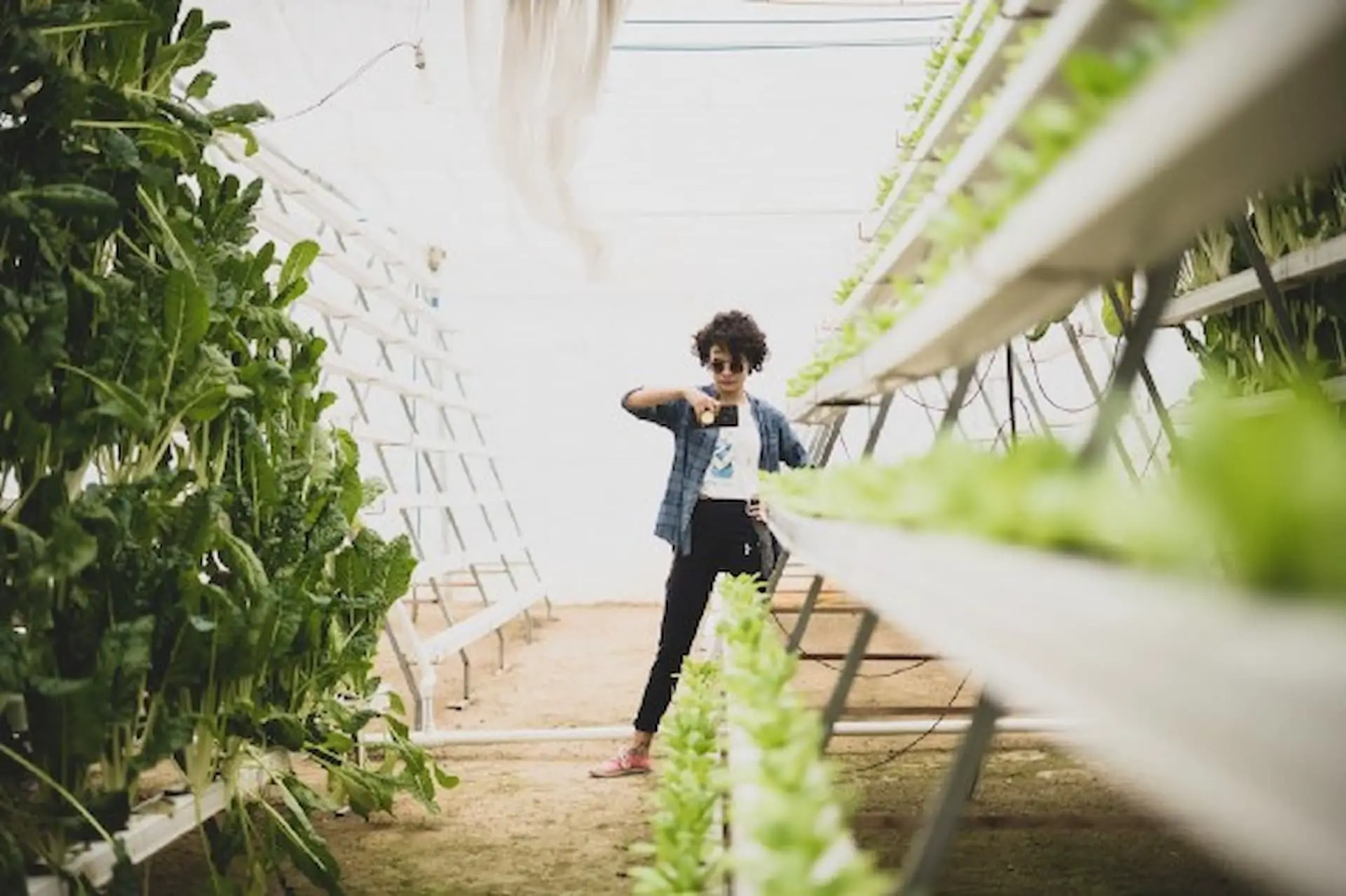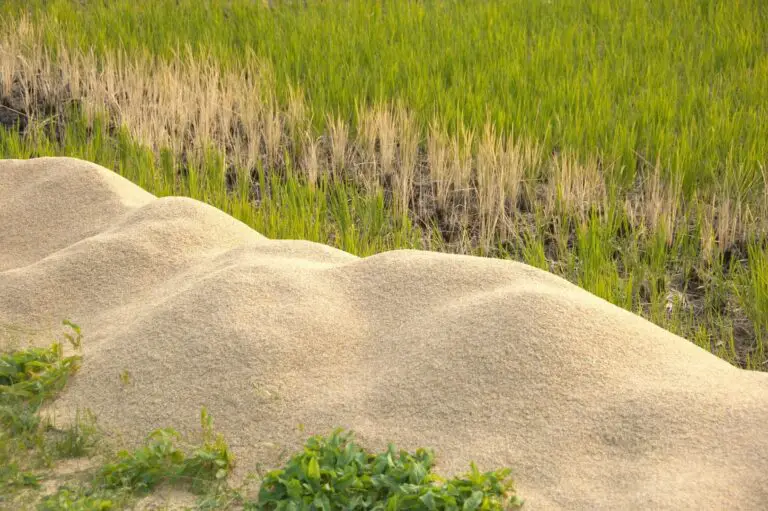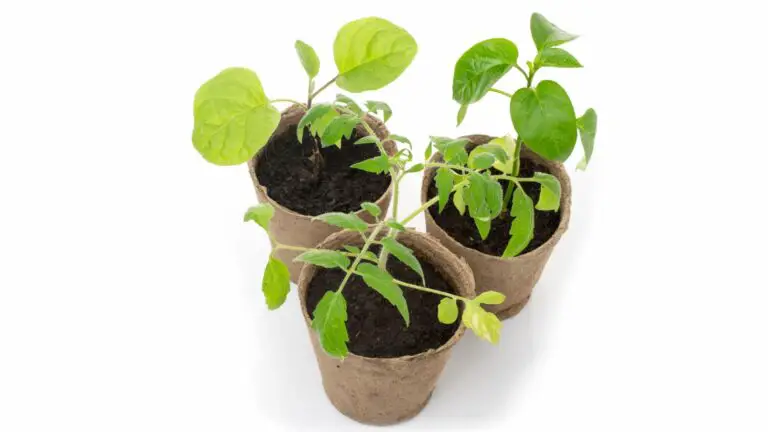How to Choose the Right Size Rockwool for Hydroponics?
Disclosure: Your purchases through our links may earn us a small commission, supporting our site’s ability to provide valuable information to our readers. Rest assured, it won’t impact your price. Thank you for your support.
Rockwool has been around for a while, but when you’re new to Rockwool hydroponics, the question of Rockwool size can be confusing.
Rockwool is made from rock slag, which is spun into fibers and then compressed together with water until it becomes a solid block of material. They are great because they provide the perfect environment and nutrients to start a plant’s life, whether it will be in soil or hydroponics.
This Rockwool will have an R-value of 3 or 4 per inch, so if your growing area needs insulation, this could be the perfect material!
But what if we need it for hydroponic growing? Let’s look at it further. This blog post discusses Rockwool sizes applicable to hydroponic growing.
What Rockwool Sizes Are Available and When to Use Them?
As you are building your Rockwool hydroponic system, one thing to keep in mind is that Rockwool comes in different sizes.
You know there are three types of Rockwools. They are cube, slab, and granulated Rockwools. So make sure you pick the right one for your needs.
The most common size of Rockwool used for hydroponics systems is 2″ x 6.
However, as per some full use resources, there are different sizes in each type of Rockwool.
Related: How to Choose the Right Size of Rockwool for Hydroponic Growing System?
Rockwool cubes sizes
When looking to buy a Rockwool cube, you’ll find it comes in mini cubes, briquettes, and large-sized cubes. The most common size of Rockwool used for hydroponic systems is the mini cube. Rockwool sizes are also categorized as Small, Medium, Large, Extra Large. The size of these Rockwools may differ. However, in general, Rockwool cube sizes available in the market are 1.5″x1.5″x1.5″, 2″x2″x1.5″, 3″x3″x2.5″, 4″x4″x2.5″, 6″x6″x5.3″. (Updated with the latest sizes available)
Now that you know the different sizes of Rockwool, when should you use each size?
Small Rockwools work best in small hydroponic systems or for plants that need less space between them. These Rockwool’s are great for herbs and lettuce!
Medium Rockwools are perfect for drip irrigation with larger plants like tomatoes and bell peppers.
Large Rockwool cubes should be used if your plant needs more than 12 inches of spacing from other plants. Cucumbers, squash, and other large vegetables typically need this amount of space to grow correctly.
Extra-large Rockwool cubes can be used in bigger hydroponic systems or for widespread plants. When using extra-large Rockwool cubes, make sure you leave at least 18 inches of space between the Rockwool and other plants.
You can select the Rockwool cube suitable to your garden by clicking the following links 1 inch, 1.5 inch, 2 inch, 3 inch, 4 inch, 6 inch.
Check out this affiliate link if you need to find right size of Rockwool cubes for your hydroponic garden
Rockwool slabs sizes
The most popular slab widths are 6, 8, 10, and 12 inches. They’re all 3 inches deep and 36 inches long. The 6″ and the 8″ are the most common sizes, large enough to develop the hydroponic system.
Check out this affiliate link if you need to use Rockwool slab for your hydroponic garden
Granulated Rockwool
There are three distinct types of loose Rockwool: absorbent, repellant, and Hortiwool. Because Rockwool is loose rock, we can’t limit it to the typical cube or slab shapes listed above. This allows us to fill the chosen pots or containers in various sizes.
Related: How to Choose the Best Rockwool for Your Hydroponic
What Are the Important Factors That Need to Consider When Choosing the Size of Rockwool for Your Hydroponic System?
When choosing the size of Rockwool for your hydroponic system, it is important to consider the following factors:
- The size of your hydroponic system. If you have a small system, using a Rockwool block that is too large will take up valuable space and could potentially clog your drainage system. On the other hand, if you have a large hydroponic system, using a Rockwool block that is too small will not provide enough insulation.
- The type of hydroponic system you are using For a small ebb & flow system or smaller plants like lettuce or herbs, small Rockwools are a good option. If you’re doing drip systems with larger plants like tomatoes, then medium Rockwools will work best. And for bigger plants like cucumbers that need more space between them. So need large Rockwool!
- The climate in which you live When choosing Rockwool for your hydroponics garden, make sure to consider where you live as well as what size Rockwools work best for your setup. It is essential to use Rockwool to provide enough insulation in hotter climates. If Rockwool is used in a small hydroponic system, it could become clogged with water and reduce the amount of oxygen your plants receive! Warm climates should use Rockwools with high insulation levels, while cooler climates require Rockwools with lower amounts of insulation. Using too much or too little Rockwool can cause more harm than good!
- The amount of insulation your growing area needs.
Some people also like to use Rockwool as a soil amendment or a top dress for their plants. In this case, smaller Rockwool pieces can be used and will help to improve the drainage and aeration of the soil.
The different sizes will require different nutrient concentrations, so make sure you do your research before starting.
What Is the Importance of the Size of Rockwool?
The most important part is to make sure you don’t choose a Rockwool that’s too large because it can potentially cause problems in your hydroponic system, such as clogging up water drainage.
On the other hand, a Rockwool that is too small can reduce the amount of oxygen your plants receive because Rockwool retains water.
After learning all this information, we recommend using mini Rockwools blocks which measure inches deep by inches wide by inches long (or ). This size works great for ebb & flow systems with smaller plants like lettuce and herbs, while medium Rockwools work best with drip irrigation, including larger plants such as tomatoes. Finally, if you have a large hydroponic system or are using extra-large Rockwool cubes with plants that spread out wide, then make sure to leave at least 18 inches of space between the Rockwool and other vegetation!
When choosing Rockwool, keep these things in mind:
- Proper lighting (most important!)
- Proper spacing
- what type of system you’re using: ebb & flow hydroponic system might need close while drip system needs more room for water to reach the roots.
- Proper nutrients: It’s important that Rockwool is properly taken care of and your plant knows what it needs at all times, so make sure you’re following a hydroponic nutrient guide for Rockwool!
Start With the Correct Size Rockwool to Function Your System Properly!
Rockwool is a synthetic fiber that has been used as insulation due to its ability to regulate temperature and humidity levels in buildings.
However, it’s not just its insulation properties that have made Rockwool a popular choice for hydroponic growers. It has many benefits — it’s also the fact that Rockwool is a great medium for plant growth!
I’ve given you some Rockwool size guidelines to help you choose the right Rockwool for your hydroponics garden, including the different available sizes and factors to consider when selecting the sizes! Make sure to choose the right size Rockwool for your system, and it should work perfectly!
Thank you for reading!
Also, read:
How to Increase the Germination Rate in Hydroponic Rockwool?
Peat Moss May Be Good for Plants, but Gardeners Should Avoid It
How to Grow Kratky Method Plants: A Passive Hydroponic System



